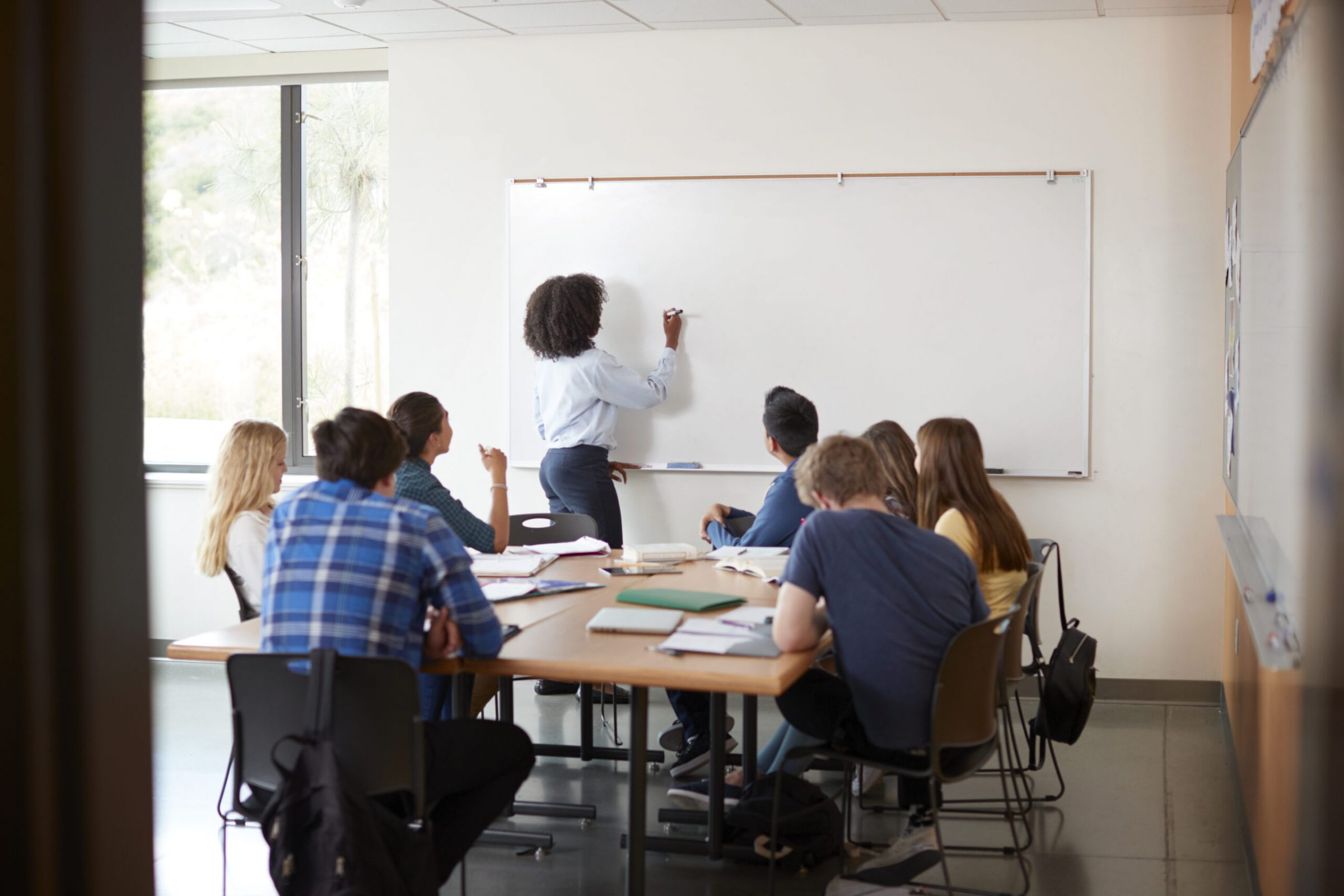SRI Education is leading an efficacy study of Discipline in the Secondary Classroom (DSC); a positive and proactive approach to classroom management developed by Safe & Civil Schools. In partnership with researchers at the University of Missouri, SRI will assess whether DSC helps improve high school teachers’ classroom discipline practices and students’ behavior and academic outcomes.
Discipline in the Secondary Classroom is a program that uses evidence-based strategies for designing a classroom management plan that:
- Prevents behavior problems
- Fosters student engagement
- Teaches responsible behaviors
- Creates a positive and productive classroom environment.
Students educated in classrooms characterized by poor behavior management are more likely to experience exclusionary discipline practices that reduce their instructional time and long-term educational success.
When students receive discipline referrals, suspensions, or expulsions, they lose valuable opportunities to learn. Also lost along the way are the benefits of good relationships with teachers and peers, the prosocial influences of extracurricular activities, and the confidence that comes from fitting in socially at school and succeeding academically.
In the recent School Discipline Consensus Report (2014), Morgan and colleagues documented that millions of middle and high school students are being suspended each year, mostly for minor misconduct, and that these students are at risk for academic failure and school dropout. This crisis prompts a call for research-based and refined approaches—going beyond explicitly student-focused interventions and exclusionary discipline practices—to address secondary school teachers’ ineffective classroom behavior management that leads to increased student problem behavior and decreased academic engagement and performance.
What is discipline in the secondary classroom?
Discipline in the Secondary Classroom is a program that uses evidence-based strategies for designing a classroom management plan that prevents behavior problems, fosters student engagement, teaches responsible behaviors, and creates a positive and productive classroom environment.
The Discipline in the Secondary Classroom manual is organized under five key dimensions abbreviated as “STOIC” :
- Structure the classroom for success
- Teach students how to behave responsibly in the classroom
- Observe and monitor student behavior
- Interact positively with students
- Correct irresponsible behavior fluently in a manner that does not interrupt the flow of instruction.
The curriculum offers both new and seasoned teachers hands-on guidance from a step-by-step manual, consultation from certified trainers, practical daily strategies, and ready-to-use activities. In addition to training in the Discipline in the Secondary Classroom curriculum, teachers will receive onsite and ongoing technical assistance from a coach over the course of the school year.
The monthly coaching sessions provide teachers with opportunities to observe, practice, and receive feedback about the critical skills and reflect on their success in implementing the program. The coach will address remaining trouble spots that teachers are experiencing in achieving full implementation and provide consultation needed to effect actual behavior change in the classroom.
How is discipline in the secondary classroom assessed?
Funded by the U.S. Department of Education, SRI, in partnership with the University of Missouri and Safe & Civil Schools, is conducting a large-scale five-year, randomized controlled study that will begin in fall 2019 and involve up to 100 high school teachers in school districts in two states. Researchers will conduct assessments and direct observations in participating classrooms. They will also collect teacher surveys covering:
- Student behavior and self-assessments of classroom management
- Student surveys of academic engagement
- Direct assessments of mathematics and reading
- Information on school-wide behavioral and educational outcomes from school disciplinary records.
Researchers will assess the fidelity of implementation in intervention schools and the degree to which discipline in the secondary classroom affects teachers’ classroom practices and students’ behavior and academic outcomes using linear regression or hierarchical linear modeling (HLM).
In addition, we will examine the outcomes of subgroups as defined by potential individual-level mediators (such as teacher self-efficacy, student engagement) and classroom-level moderators (such as grade level, course content) that may uncover underlying mechanisms that lead to observed outcomes.
Dissemination products will include postings on SRI Education’s Student Behavior Blog , journal articles, conference presentations, and study reports in multiple formats. These will be accessible to wide audiences of educators, administrators, parents, students, and researchers.
Results will strengthen the knowledge base regarding “what works” in supporting secondary school teachers’ positive approaches to classroom management and ameliorating the behavioral and academic challenges of high school students.
The study presented here is supported by the Institute of Education Sciences, U.S. Department of Education, through Grant R305A180013 to SRI International. The opinions expressed are those of the authors and do not represent the views of the Institute or the U.S. Department of Education.
Clients & partners
Associated field of research
Associated SRI team members
-

W. Carl Sumi
Senior Principal Education Researcher, SRI Education
-

Michelle W. Woodbridge
Exec. Director & Sr. Principal Researcher, Center for Learning & Development, SRI Education
-

Kristen Rouspil
Division operations manager, SRI Education
-

Sara Gracely
Research Analyst, SRI Education
-

Mary McCracken
Senior Scientific Programmer/Analyst, SRI Education



